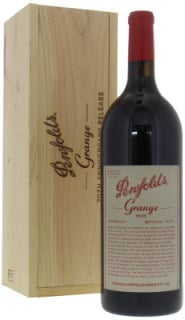Professional reviews
Robert Parker (99)
SQN’s Syrahs are dynamite. In 2001, Krankl began to experiment with a limited production Syrah aged over 40 months in new oak (a la Marcel Guigal’s famous Cote Roties - La Mouline, La Landonne, and La Turque). The second rendition of this cuvee, the 2002 Heart Chorea, is a Cote Rotie-like blend of 95% Syrah and 5% Viognier. Most of the fruit comes from the Alban and White Hawk vineyards. The opaque purple-colored 2002 Heart Chorea possesses extraordinary levels of concentration, intensity, and subtle nuances, a fabulous nose of charcoal, acacia flowers, creme de cassis, blackberries, pain grille, and espresso roast. Opulent, full-bodied, and super-intense, but neither heavy nor out of balance, it is unfortunate that production of this unreal Syrah is less than 100 cases.
Vineyard sources are gradually changing at Sine Qua Non as a movement to 100% estate fruit from vineyards in the Santa Rita Hills and sites near the winery in Ventura County come into full production. However, at present some grapes emanate from other sources, particularly white grapes from the Alban Vineyard, and Grenache and Syrah from Alban, Alta Mesa, Bien Nacido, Shadow Canyon, and White Hawk vineyards. Yields were unbelievably small in 2003 (white varietals yielded .9 tons of fruit per acre, Pinot Noir 1.64 tons per acre, Grenache .32 tons per acre, and Syrah 1.20 tons per acre). In 2004, white varietal yields were 1.49 tons per acre, Pinot Noir 1.19 tons per acre, Grenache 1.04 tons per acre, and Syrah a whopping 1.48 tons per acre. Yields rose by 20-40% in 2005. Longtime readers know that I consider these offerings to be about as remarkable as New World wines can be. They possess extraordinary richness and nuances as well as superb balance, purity, and aging potential. The whites are whole cluster pressed and go straight to barrel without any stabilization or settling, and everything is fermented with indigenous yeasts. No racking takes place until bottling, which is usually more than a year after the harvest. The reds are 100% destemmed, although Grenache stems have been utilized on occasion. One to two ton open top fermenters are used, and following a cold soak that can last up to seven days, the wines are fermented with 2-3 daily punch downs. They are kept on their skins for a maximum of 2 plus weeks. All malolactic takes place in barrel, and the wines are bottled 18-24 months after the harvest with minimal clarification. Manfred Krankl, a true believer in radical viticulture, practices extensive crop-thinning, shoot positioning, etc. The meticulous attention to detail is evident in both the vineyard and the winery.
BOW (9.25)




















